History
Finding a business boat - without searching?
1 Trainee-Ship TS Roter Sand
2008: Looking for a multihull to support our coaching and training business, my friend Klaus Tietze showed me – after some disappointments – a run-down, red monster ship: a 28m Gaffelketsch. Hesitantly, I boarded the ship and descended the wide companionway into the spacious saloon, dominated by an oval table. At first sight I recognised the fantastic potential for team training and after Klaus started the engine, I was thrilled by the sound and the ship with 24 berths.
For use as a multi-functional and educational vessel, the Roter Sand was modelled on the classic pilot schooners in the German Bight. After the refit, we used her for some time for our team training according to the Ocean Action Learning method, which we use to train managers and corporate teams.
German registration problems:
It was no longer possible to operate the TS Roter Sand commercially in Germany: she neither fell into the class of traditional ships (not old enough), the class of sail training ships according to IMO was never introduced in Germany, as a charter yacht only a maximum of 12 persons on board were allowed.
Canadian way out:
We chartered and then sold the Roter Sand to the Canadian environmental organisation ECOMARIS, which rebuilt the ship according to the strict Canadian Transport Canada regulations and has been operating it very successfully ever since.












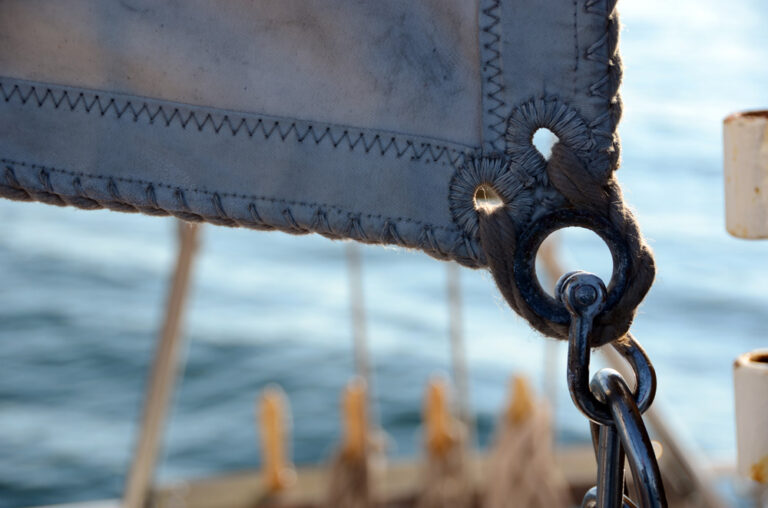


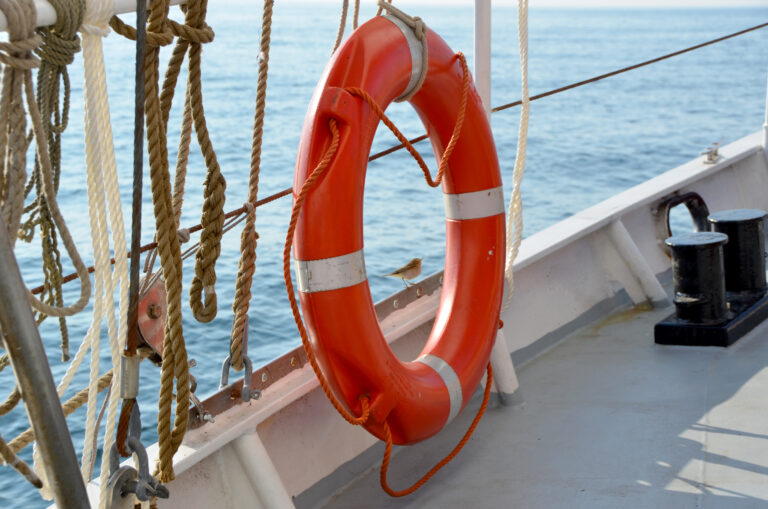




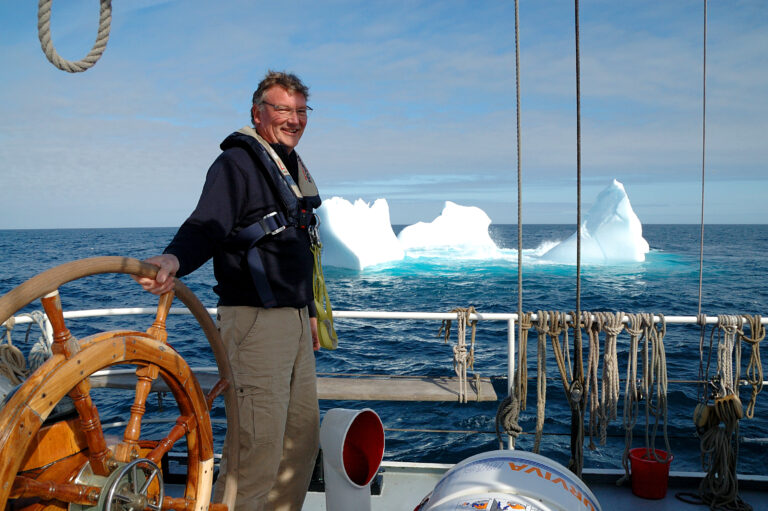
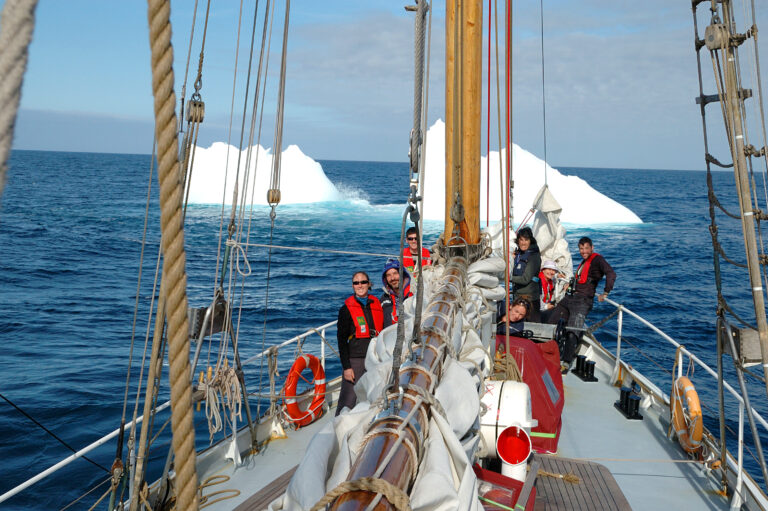




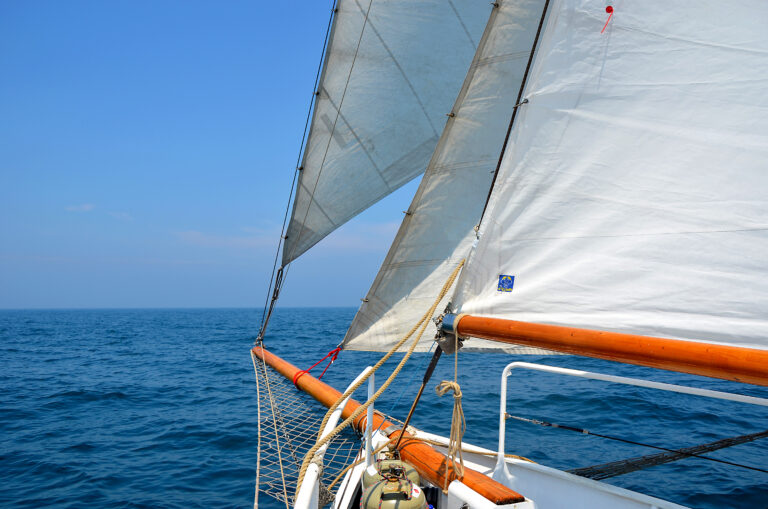


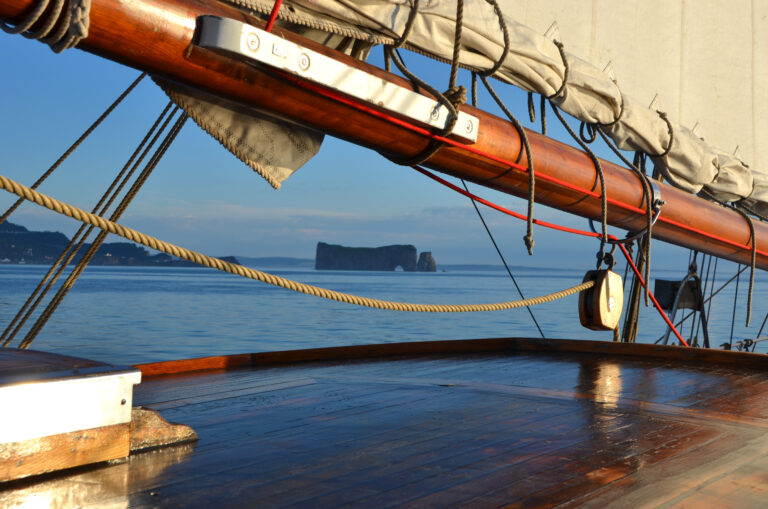


- 1995-1999 Built by AUCOOP/BBV Bootsbau Vegesack in Bremen
- Operation as a ship for youth sail training in the Wadden Sea
- 2008 – Purchase by PELZER AP and refit
- Operation as a sail training ship for team development
- 2010 – Another refit after frost damage and near sinking
- 2012 – Transfer to Canada and charter to ECOMARIS
- Operation in captain training, environmental education and youth sail training.
- 2013 – Refit according to Transport Canada Regulations and final sale
Marine steel gaff ketch with flat bottom ( 80mm thick) and twin keels.
Length overall: 81 feet / 28 m
Length waterline: 19.90 m
Width: 5,40 m – Draught: 1,21 m – Displacement: 56 BRT
Engine: MAN 252 PS – Generator 220/380V Lister-Pettersen
Navigation computer with screen, radar, autopilot
Sail area: 190 sqm (gaff mainsail, gaff mizzen sail, self-tacking boom jib, inner jib free-flying, outer jib on forestay
24 berths, galley, front cabin, saloon, navigation bridge with inside steering station, skipper’s cabin
2 Corsair F31 Trimaran
2016: For several years we repeatedly chartered large traditional ships or catamarans for our team trainings and strategy workshops. For personal executive coachings with 1-2 people, a completely different, new concept presented itself:
Fast coaching on the water with a trailerable racer.
With the trimaran F31-R (the race version with a longer carbon mast) we ran a successful business concept for intensive trainings with 1-2 persons. The use of the largest trailerable, collapsible trimaran was very popular with the management trainees. The way the coachee steered the boat reflected his personality. In this way, sailing decisions could be questioned by the coach. This reflection was seamlessly transferred to business decisions.
Topics such as focus, concentration, resilience, decision-making ability and overview can be quickly brought to light and playfully approached and tried out in a new way with a high level of acceptance. It turns out that experience anchors change in the long term.




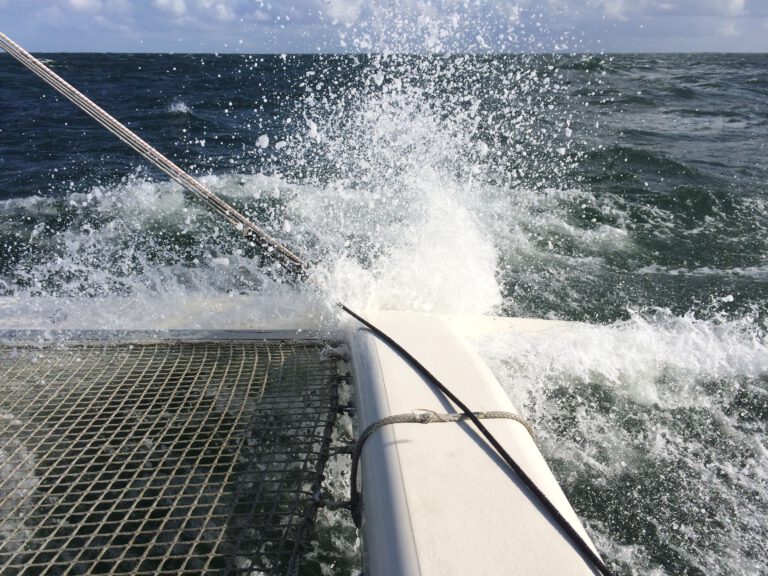








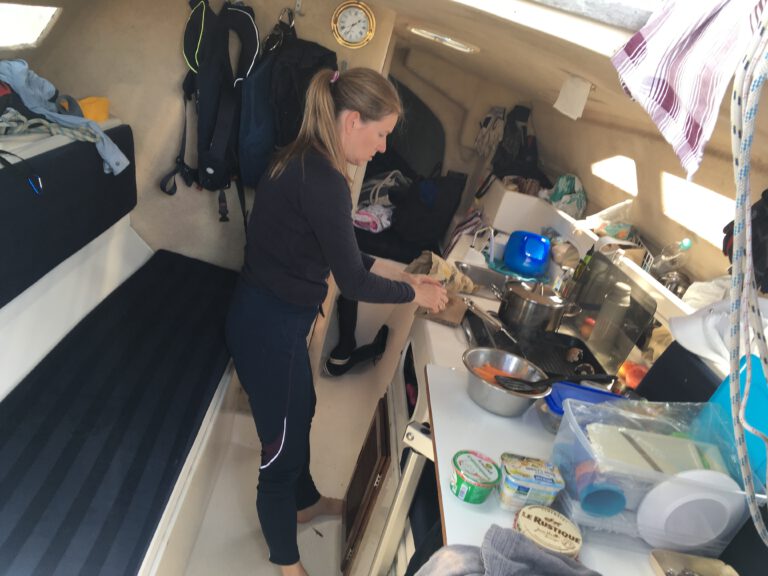
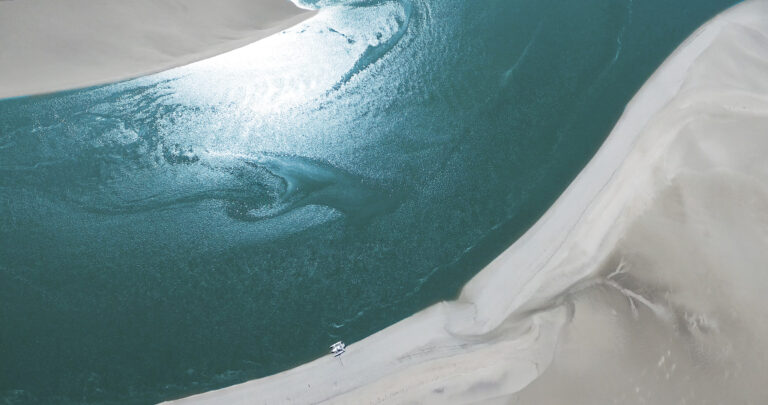


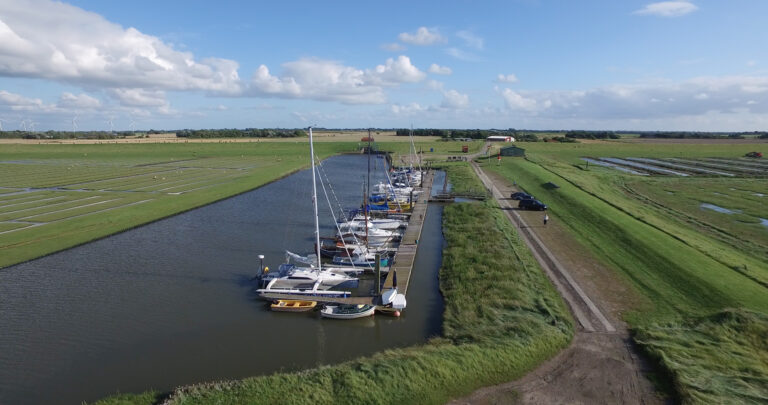


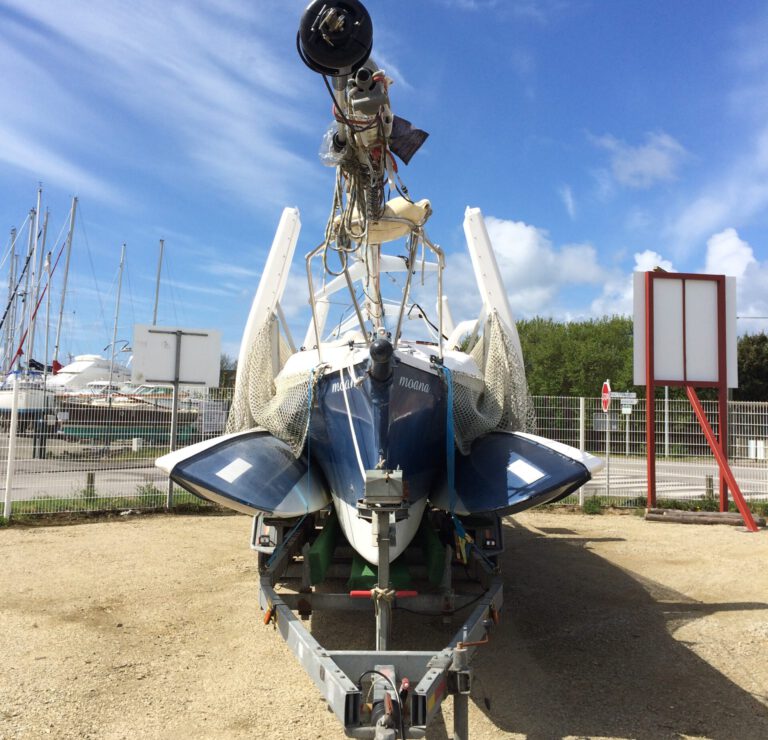




- 2000 – Built by Corsair as Farrier F31 R in USA/Chula Vista
sailed as a regatta daysailer in France/Brittany - 2016 – Purchase and transfer by PELZER AP
- Used in executive coachings and team trainings for small teams
on the Elbe, Baltic and North Sea - 2017 – Refit with new sails, cooker, sprayhood for the rough north
and modern navigation electronics for longer trips - 2018 – Sale of the WINDFEE to the Netherlands
- Since then, operation as a long-distance sailor on the Ijsselmeer and Mediterranean Sea
Trimaran F31R, foldable/trailerable
Fibreglass-epoxy sandwich construction with carbon reinforcements
Length overall: 31 feet / 10.14 m
Width: 6.84 m – Draught: 1.21 m – Weight: 3.1 t
Engine: Yamaha 11kW outboard
Autopilot, Raymarine radar and plotter, marine radio VHF
rotatable carbon mast 14m height
Sail area: 40+20+42=102 sqm (mainsail, furling jib, code 0)
Cockpit, saloon with galley and double bed, bathroom with toilet and sink, forepeak with double bed, outside steering position with sprayhood
3 Catamaran Farrier F41
2018: There were two considerations for business with ships:
Either continue to use the limited space and comfort of our regatta trimaran for smaller coaching sessions or invest in a larger vessel with more options for team training.
Unique opportunity and criteria
The exciting offer of a fast global cruiser in the form of the F41R catamaran suited us very well. The following criteria played a role in our decision:
- Year-round use possible
- Size of the vessel in relation to running costs
- Speed potential for safe sailing (avoiding storms or sailing away)
- Budget and headroom
- Comfort for long cruises
- Familiar Farrier design with lightweight, efficient construction from high quality, durable building materials
- Centreboards for flexible lateral area
- Minimal draught, folding rudder and stability to dry
- Sailing and handling / Single-handed?
- Engine: propulsion & power supply
- Independence over a three-month period (energy, food, water)
- Loading capacity





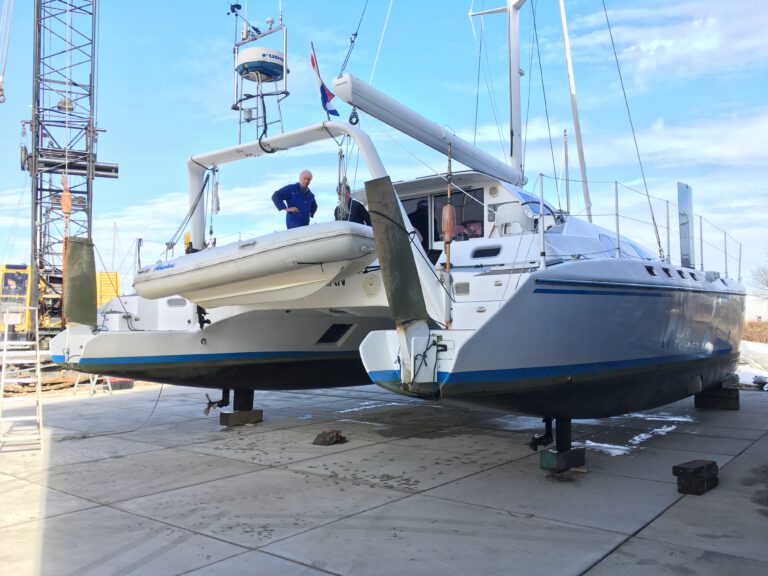



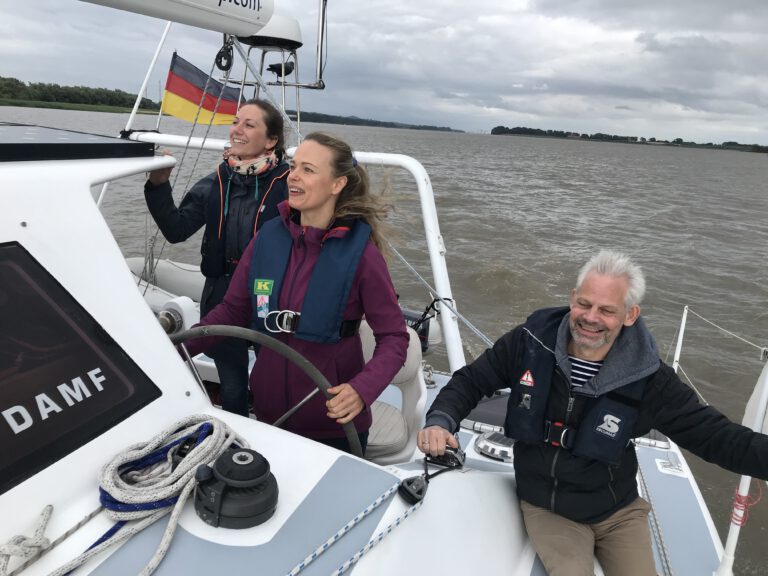




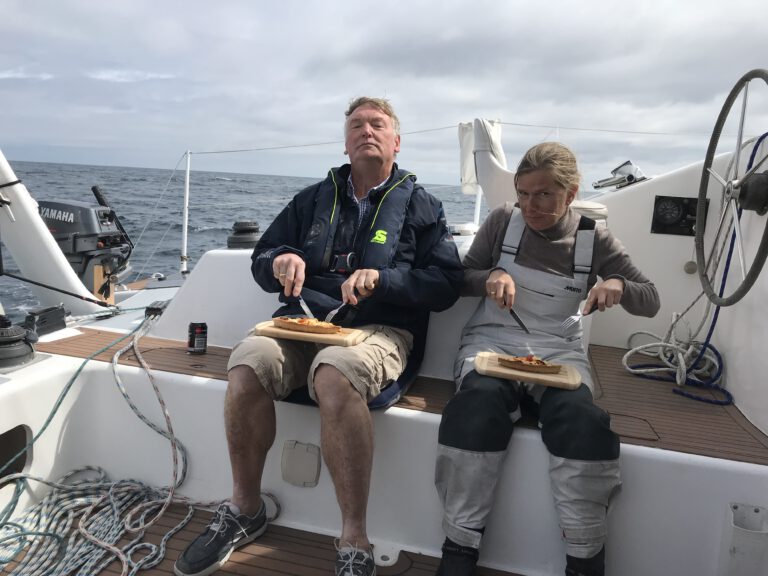





Lenghth Over all: 12,70 m / Waterline: 12 m
Width: 7,14 m
Draught: 0,65 / 1,10 / 2,20 m
Displacement: 7,56 t
Daggerboards and pivot rudders
Light and stable Epoxy-Divinycell-Sandwich Construktion with glass fibre / carbon reinforcements
Varnish: White, Awlgrip Topcoat System, 2018
(three-component epoxy paint),
Tread deck Epifanes anti-slip paint, light grey 212
Deck saloon with seating area for 8 p. and a navigation station.
Galley 2 rows, gas cooker, gas oven, double sink, salt water tap, refrigerator, 2 Engel cooling/freezing boxes, dry storage, Cookware and dishes
3 cabins each with 1 double bed 140x200m
Port side Jabsco toilet/washbasin, starboard bathroom with shower+E-toilet, double washbasin
Rigg: Sloop
Standing rigging: Carbon mast 16,50m
Stainless steel shrouds and forestay 14mm
Main sail: 62m² fully battended with Squaretop, Grant Piggot (2018)
Dacron, reefable on Leisure-Furl furling boom, with cover
Fock: 35m² Hyde (2009)
reefable on Pro-Furl roller unit, with sun protection edge
Code 1: 65 m² Clownsails (2020)
Carbon offshore, double layer on roller conveyor
Code 0: 75 m² Clownsails (2018)
Carbon light wind on Harken roller system
Engines: Lombardini SD 1003 LDW Saildrive
29 PS /22 PS
with2 Mastervolt Alternators 24 V / 150 A (2020)
Alpha 3 control unit (2020)
Diesel tanks: 1×180, 1x100l, 5x25l
Batteries: 2 Mastervolt MLI Ultra LiPo-Batteries
24 V / 5500 Wh (2020)
1 Mastervolt MLI Ultra LiPo-Battery
12 V / 2750 Wh (2021)
Solaranlage: 10x Phasun Sun Peak SPR 110 Wp (2020)
2x Solara Power S Module
Sunpeak charging unit, Mastervolt solar charger
Wind generator: Superwind 350 W /24 V (2020)
with control unit
Watermaker: Aquatec AC 110 (110l/h 220 V)
Water tank: 280 l
Hot air heating: 2x Webasto AIRTOP 2000ST

